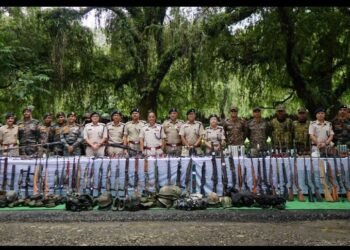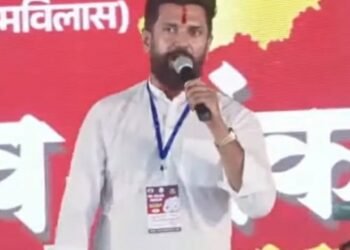From war warnings to guiding the Dalai Lama’s escape, the Nechung Oracle has shaped Tibet’s destiny—today’s ceremony reasserts that role in exile.
BY PC Bureau
July 1, 2025 — In a ceremony steeped in history, faith, and cultural identity, the 16th Kashag (cabinet) of the Central Tibetan Administration (CTA) today formally invoked the Nechung Oracle at the Nechung Drayangling Monastery in Gangchen Kyishong. This twice-yearly ritual—observed in summer and winter—marks an enduring spiritual cornerstone of Tibetan governance in exile, underscoring the continued reliance on divine guidance in matters of state.
The event was attended by the highest echelons of Tibetan exile leadership, including Chief Justice Commissioner Yeshi Wangmo, Speaker Sonam Tenphel, Sikyong Penpa Tsering, ministers (kalons), parliamentarians, and secretaries from various CTA departments. Significantly, actor and longtime Tibetan advocate Richard Gere, Chair of the International Campaign for Tibet, was present alongside his son, Homer James Jigme Gere, adding an international dimension to the ceremony.
Nechung: The Voice of the Divine
The Nechung Oracle, known in Tibetan as Kuten (“physical basis”), is believed to be the human medium through whom the protector deity Pehar communicates. The Nechung tradition has served as the state oracle of Tibet since the 17th century during the reign of the Fifth Dalai Lama. For centuries, Tibetan rulers—including successive Dalai Lamas—have sought Nechung’s counsel in times of war, political upheaval, and existential crises.
Contrary to modern assumptions, the oracle is not merely symbolic. When in trance, the medium performs elaborate dances and delivers cryptic yet powerful prophecies, often requiring interpretation by high-level monks and officials. The insights are taken seriously—treated as spiritual directives that shape both public policy and monastic response.
Historical Precedents: When the Oracle Spoke
One of the most famous instances of Nechung’s prophecy occurred in 1950, when the oracle warned the 14th Dalai Lama of grave danger from China and advised him to assume full political leadership at a young age. This foresight proved prescient, as Chinese troops soon entered Tibet. Later, in 1959, just before the Dalai Lama fled to India, Nechung was again consulted. It was through the oracle’s urgent counsel that the Dalai Lama was persuaded to leave Lhasa, saving his life and enabling the establishment of the exile government in Dharamshala.
READ: Zomi Chiefs Warn Centre Against Conditional SoO Extension
There are also records of the oracle offering guidance on environmental decisions, community health threats, monastic discipline, and international diplomacy, always framed within a spiritual logic but often aligning remarkably with real-world outcomes.
Though today’s ceremony was a non-trance ritual—meant as a formal invocation rather than a prophetic session—the event signals the leadership’s intent to maintain spiritual alignment in uncertain times. According to CTA sources, a trance consultation may be scheduled later this year should pressing concerns—political, environmental, or geopolitical—require the oracle’s intervention.
READ: Can the “leaderless” Kuki-Zo Movement Survive Its Divisions Without a Moses to Lead Them?
With China increasing pressure on Tibetan institutions abroad and tensions mounting in exile communities over generational leadership transitions and political strategy, many observers believe that the need for spiritual clarity is higher than ever.
The Oracle in Modern Times
Critics often question the role of oracles in modern politics, but for Tibetans, Nechung represents more than superstition—it is a cultural anchor. As Sikyong Penpa Tsering has noted in previous addresses, “Our struggle is both political and spiritual. If we lose either, we lose who we are.”
The Nechung ceremony, therefore, is not merely religious. It is a public reaffirmation of identity, unity, and the belief that the Tibetan future—even in exile—remains guided not only by diplomacy or protest, but by sacred wisdom carried across centuries.













